The Key Dimensions to Know When Designing Storage
Store almost everything in your home neatly and efficiently by tailoring storage sizing for specific needs
Eva Byrne
27 June 2018
I'm an Architect + House Consultant based in Dublin. I specialise in House Consultations to maximise Space, Light and Storage in your home. Whether you are planning a Renovation, Extension or New Build project, I aim to help you get your project off to the best possible start and to make best use of your cents and centimetres.
I'm an Architect + House Consultant based in Dublin. I specialise in House Consultations... More
An organised home is a calm home – and key to this is great storage. Everything you wish to house will have a variety of storage options, each with their own dimensions. Creating great storage is about knowing these dimensions and about choosing the options that work best for you and your home. From keeping your files to housing your mops and brooms, here’s a guide to the dimensions you’ll need to know to best store your possessions throughout your home.
Shoes
With many homes adopting a shoe-free policy nowadays, the matter of shoe storage demands serious thought.
Most shoes measure no more than 30 centimetres in length so a simple solution is to create shelves 30 centimetres deep. Making these shelves adjustable in height will allow you accommodate a range of footwear, from slippers to boots. If you prefer fixed shelves, you’ll need to leave 12-18 centimetres clear between each shelf.
Placing the shelves at an angle can work well, as it will allow you accommodate shoes in a depth shallower than 30 centimetres.
With many homes adopting a shoe-free policy nowadays, the matter of shoe storage demands serious thought.
Most shoes measure no more than 30 centimetres in length so a simple solution is to create shelves 30 centimetres deep. Making these shelves adjustable in height will allow you accommodate a range of footwear, from slippers to boots. If you prefer fixed shelves, you’ll need to leave 12-18 centimetres clear between each shelf.
Placing the shelves at an angle can work well, as it will allow you accommodate shoes in a depth shallower than 30 centimetres.
Books
A key decision with shelving for books is whether to opt for fixed or adjustable shelves. Fixed shelves have the advantage of creating in-built, visual harmony. Adjustable shelves mean that each shelf can be positioned to suit books of differing heights. This might be important where space is limited and every centimetre needs to be maximised. Shelves 60 centimetres wide will work well here and allow a single book to be removed without the rest collapsing. Adjustable shelves wider than 60 centimetres run the risk also of sagging under the weight of heavy books
Next is the matter of the types of books to be stored. Most books fit happily on shelves 23 centimetres deep. And most books, including paperbacks, need a clearance (ie, the distance between each empty shelf, measured vertically) of just 23 centimetres, with a clearance of 30 centimetres accommodating all but oversize books. These need shelves 30-40 centimetres deep and a vertical clearance of 50 centimetres.
While you’ll need to fine-tune the dimensions to suit the context and visual appearance of the shelving, good all-round dimensions for fixed shelving would be a depth of 23 centimetres and a clearance of 30 centimetres.
11 book lovers and where they like to read
A key decision with shelving for books is whether to opt for fixed or adjustable shelves. Fixed shelves have the advantage of creating in-built, visual harmony. Adjustable shelves mean that each shelf can be positioned to suit books of differing heights. This might be important where space is limited and every centimetre needs to be maximised. Shelves 60 centimetres wide will work well here and allow a single book to be removed without the rest collapsing. Adjustable shelves wider than 60 centimetres run the risk also of sagging under the weight of heavy books
Next is the matter of the types of books to be stored. Most books fit happily on shelves 23 centimetres deep. And most books, including paperbacks, need a clearance (ie, the distance between each empty shelf, measured vertically) of just 23 centimetres, with a clearance of 30 centimetres accommodating all but oversize books. These need shelves 30-40 centimetres deep and a vertical clearance of 50 centimetres.
While you’ll need to fine-tune the dimensions to suit the context and visual appearance of the shelving, good all-round dimensions for fixed shelving would be a depth of 23 centimetres and a clearance of 30 centimetres.
11 book lovers and where they like to read
Home office or study
The most important thing with a home office is to make sure that any shelving is of a depth and height to accommodate your biggest files or books. Lever arch files, for example, need shelves 30 centimetres deep and with a minimum clearance of 32 centimetres.
Leave a space of at least 50 centimetres between the top of your desk and the underside of the first shelf. This can provide a useful zone for a pinboard, whiteboard or magnetic paint, should you wish to have an area for notes.
The most important thing with a home office is to make sure that any shelving is of a depth and height to accommodate your biggest files or books. Lever arch files, for example, need shelves 30 centimetres deep and with a minimum clearance of 32 centimetres.
Leave a space of at least 50 centimetres between the top of your desk and the underside of the first shelf. This can provide a useful zone for a pinboard, whiteboard or magnetic paint, should you wish to have an area for notes.
Toy storage
Whether you have a dedicated playroom or a corner in your living space, open shelving works well and allows great flexibility in accommodating all manner of toys. Smaller items such as plastic animals and cars can be housed in tubs and baskets, while books and board games can be easily seen and accessed.
A shelf-depth of 30 centimetres and a vertical clearance of 33 centimetres between each shelf are useful, all-round dimensions. Allow for at least some shelves at 60 centimetres wide to accommodate board games and larger toys.
Whether you have a dedicated playroom or a corner in your living space, open shelving works well and allows great flexibility in accommodating all manner of toys. Smaller items such as plastic animals and cars can be housed in tubs and baskets, while books and board games can be easily seen and accessed.
A shelf-depth of 30 centimetres and a vertical clearance of 33 centimetres between each shelf are useful, all-round dimensions. Allow for at least some shelves at 60 centimetres wide to accommodate board games and larger toys.
Mops, brooms, vacuum cleaners…
It’s the fiddly bits that can overwhelm a home, so try to create at least one cabinet for these miscellaneous household items. A cabinet 60 centimetres wide and 40-50 centimetres deep would be ideal. And a height of 160 centimetres should suit most situations.
Maximise every centimetre of space by strategically placing hooks and shelving baskets on every available surface, including the door.
The key measurements you need to know to design your kitchen
It’s the fiddly bits that can overwhelm a home, so try to create at least one cabinet for these miscellaneous household items. A cabinet 60 centimetres wide and 40-50 centimetres deep would be ideal. And a height of 160 centimetres should suit most situations.
Maximise every centimetre of space by strategically placing hooks and shelving baskets on every available surface, including the door.
The key measurements you need to know to design your kitchen
Linen
The secret to great linen storage is shelving that is smaller in all dimensions than you might expect.
A clearance of just 25 centimetres vertically between each shelf works perfectly. This allows you to fit a large amount of sheets or towels on each shelf but without the toppling-over effect that results from shelves placed farther apart.
Shelves 45 centimetres deep work well, allowing you to stack your linen in one tidy pile. Deeper shelves can mean rummaging for stray items in the nether reaches.
The secret to great linen storage is shelving that is smaller in all dimensions than you might expect.
A clearance of just 25 centimetres vertically between each shelf works perfectly. This allows you to fit a large amount of sheets or towels on each shelf but without the toppling-over effect that results from shelves placed farther apart.
Shelves 45 centimetres deep work well, allowing you to stack your linen in one tidy pile. Deeper shelves can mean rummaging for stray items in the nether reaches.
Coats
When is comes to coats, you’ll need to choose between hanging them on hooks or on hangers.
Hangers have the clear advantage of keeping your coats and jackets in good shape. A hanging rail in a traditional closet requires a space 60 centimetres deep. Where space is limited, you could fit the rail perpendicular to the wall, in which case you will need to leave 30 centimetres clear each side of the rail to accommodate the hangers and their coats.
Hooks have the advantage of taking up little space, with the disadvantage of tending to get over-loaded and consequently somewhat annoying to use.
Whichever option you choose, a height of 120 centimetres suffices for most coats. So place your hanging rail or hooks either 120 centimetres above the floor or above whatever items you wish to store below.
When is comes to coats, you’ll need to choose between hanging them on hooks or on hangers.
Hangers have the clear advantage of keeping your coats and jackets in good shape. A hanging rail in a traditional closet requires a space 60 centimetres deep. Where space is limited, you could fit the rail perpendicular to the wall, in which case you will need to leave 30 centimetres clear each side of the rail to accommodate the hangers and their coats.
Hooks have the advantage of taking up little space, with the disadvantage of tending to get over-loaded and consequently somewhat annoying to use.
Whichever option you choose, a height of 120 centimetres suffices for most coats. So place your hanging rail or hooks either 120 centimetres above the floor or above whatever items you wish to store below.
Bathroom
From shallow, mirrored cabinets above the basin and toilet to deeper drawers under the basin, there’s a variety of simple ways to add useful storage to even the smallest of bathrooms.
Given the array of potions and lotions we tend to accumulate, there is probably no shelf too shallow to be useful. Deep shelves can, in fact, be a hindrance, making it difficult to locate and access items in the depths. The diameter of a toilet roll (12 centimetres) is a useful all-round depth for shelving.
One item often overlooked in planning household storage is the laundry basket, which would be well placed in the family bathroom. Two baskets would be a bonus, one for darks and the other for lights and whites. While baskets vary in size, a space measuring 45 centimetres x 45 centimetres and 60 centimetres high will house most options.
TELL US
Do you have any storage tips to share? Let us know in the Comments section.
From shallow, mirrored cabinets above the basin and toilet to deeper drawers under the basin, there’s a variety of simple ways to add useful storage to even the smallest of bathrooms.
Given the array of potions and lotions we tend to accumulate, there is probably no shelf too shallow to be useful. Deep shelves can, in fact, be a hindrance, making it difficult to locate and access items in the depths. The diameter of a toilet roll (12 centimetres) is a useful all-round depth for shelving.
One item often overlooked in planning household storage is the laundry basket, which would be well placed in the family bathroom. Two baskets would be a bonus, one for darks and the other for lights and whites. While baskets vary in size, a space measuring 45 centimetres x 45 centimetres and 60 centimetres high will house most options.
TELL US
Do you have any storage tips to share? Let us know in the Comments section.
Related Stories
Kitchen Ideas
11 Sneaky Storage Ideas for Small Appliances
By Anne Ellard
If your kitchen's short on space, these novel ideas keep small appliances out of the way but still close at hand
Full Story
Bedrooms
Best of the Week: 29 Stylish Storage Ideas for the Bedroom
How do you keep your sleep sanctuary stylish and clutter-free? These 29 designs lead the way
Full Story
Wardrobes
Get it in the Bag: Storage Tips for Your Designer Bag Collection
Maintenance of your luxury-brand bags includes proper storage – here are some tips to do it right
Full Story
Interior Design
13 Places in Your Small Home to Create Storage
By Disa Tan
Outsmart small spaces with these unexpected storage solutions
Full Story
Kitchen Ideas
Smart Storage Ideas for Organising Food Containers
Dividers, rollouts and corner systems can help corral containers and lids and maximise kitchen cabinet space
Full Story
Interior Design
A Professional Organiser Shares Her Top 6 Storage Products
By Patricia Lee
Drawer dividers, undersink rubbish and pretty donation bins are among this pro’s go-to items for the kitchen and more
Full Story
Interior Design
8 Ways to Use Plywood for Storage
It’s versatile, sustainable and on trend – just some of the reasons to embrace plywood in your home
Full Story
Interior Design
Best of the Week: 23 Innovative Home Storage Ideas
Banish clutter and mess with these 23 inspiring storage arrangements from homes around the world
Full Story
Kitchen Ideas
Best of the Week: 25 Genius Kitchen Storage Ideas
Well-planned storage saves you time and keeps your kitchen running smoothly – here are 25 brilliant ideas to try
Full Story

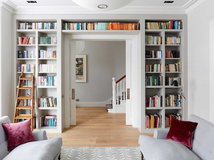


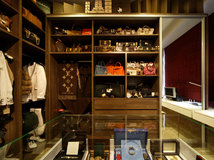
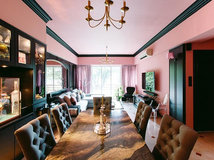
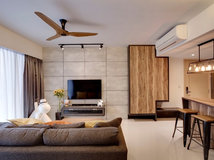

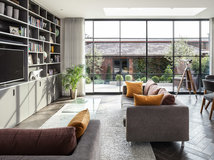
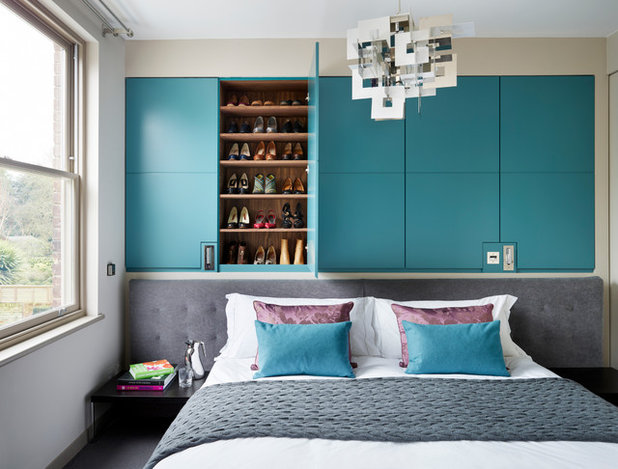

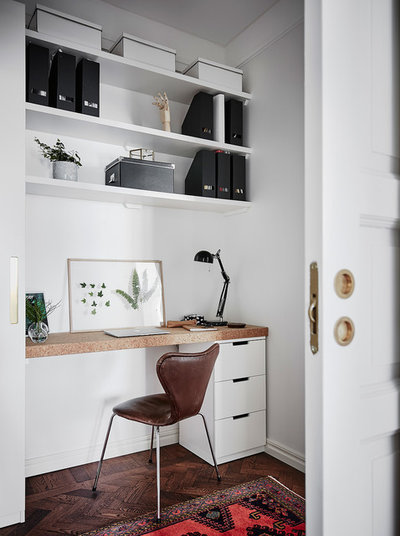
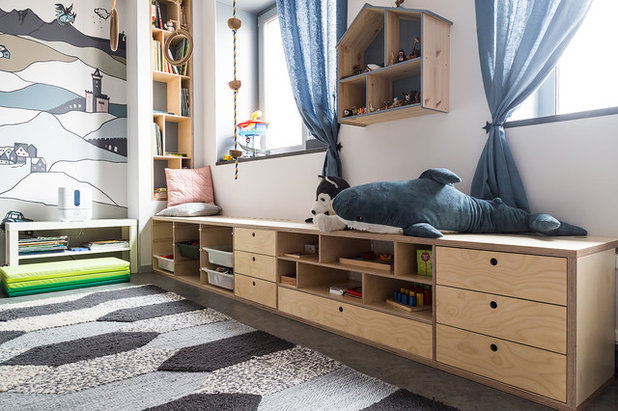
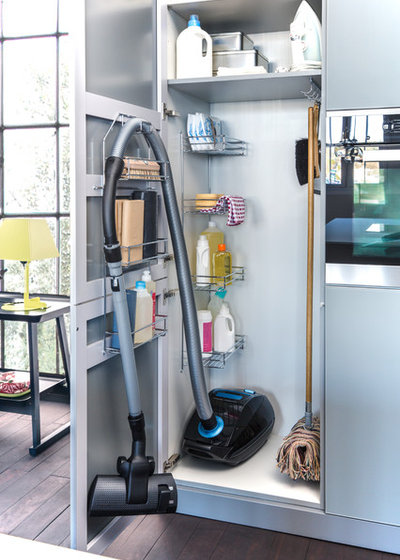
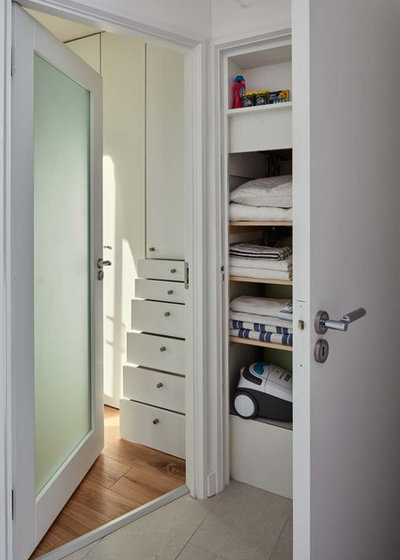
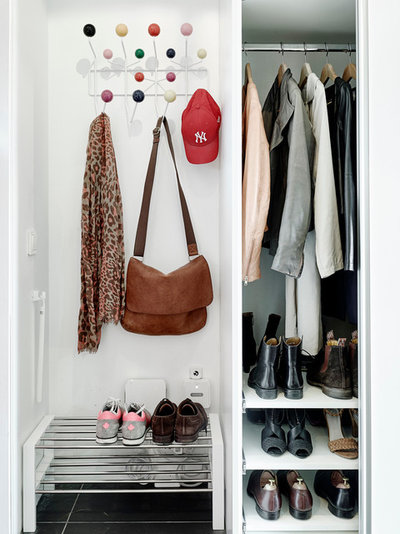
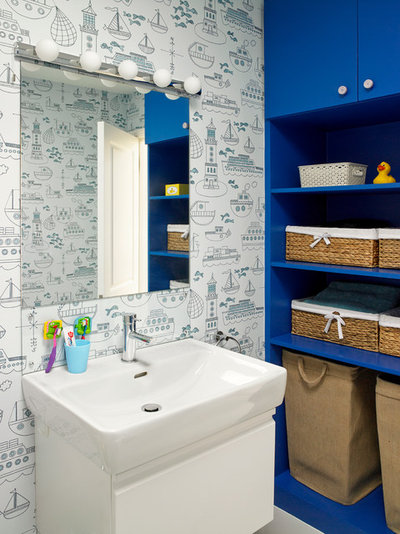
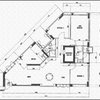
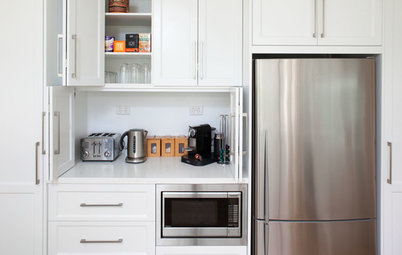
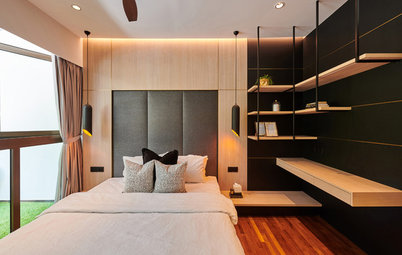

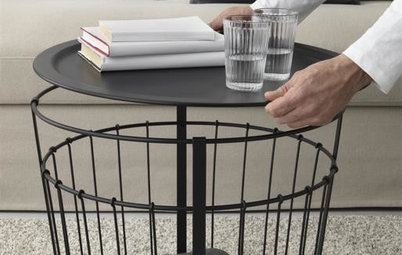


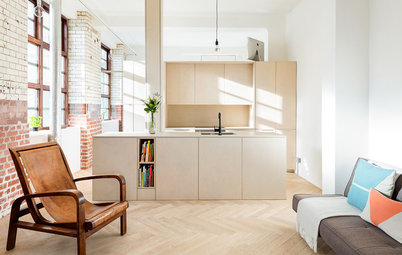
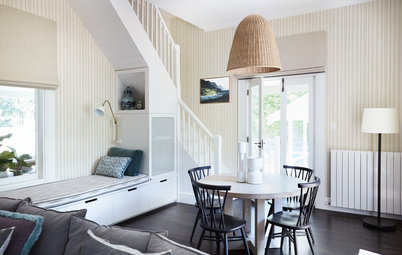
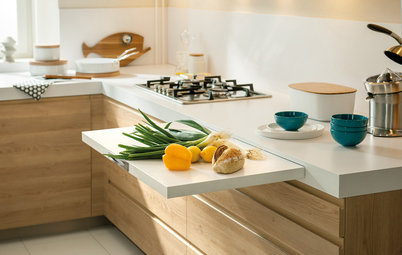
HU - for this reason, I don't have a single base cupboard in my kitchen such as you describe. I'm a little less flexible now that I used to be, and do not wish to grovel on hands and knees to the backs of large floor cupboards. So when we redid the kitchen a couple of years ago, we re-thought the storage. They are now either drawers, or have pull-out baskets, or bins, and the corner cupboard has an ingenious (Haessler ?) arrangement which makes the absolute most of the 'dead' space in the corner (not a rotating circular design, not the S-shaped swing outs, but 2 square trays, which each pull out, then across so that every part is accessible). Highly recommended !
Ditto, once again, Little Jem. I don't know how people can crouch down to put a cast-iron pot full of food into the oven, or anything that needs to be checked without opening the door, or indeed basted - and then do the same to check on how it's going, and to remove it when it is also piping hot. I would burn my arms, do my knees and back in, and might never be able to stand upright again. And the oven would remain permanently filthy!
With over 100+ pair of shoes (lost count a long time ago tbh) just mine alone and my hubby’s shoes, maybe around 18 pairs, we keep our slippers on a shoe cupboard in the entrance hallway and we change our shoes for the slippers as soon as we come in. The shoe cupboard also stores our trainers. My shoes are stored in our bedroom built-in wardrobe and hubby’s are stored in the guest room’s wardrobe. We do not like to walk around our home in the shoes we have worn outside, we find it unhygienic.